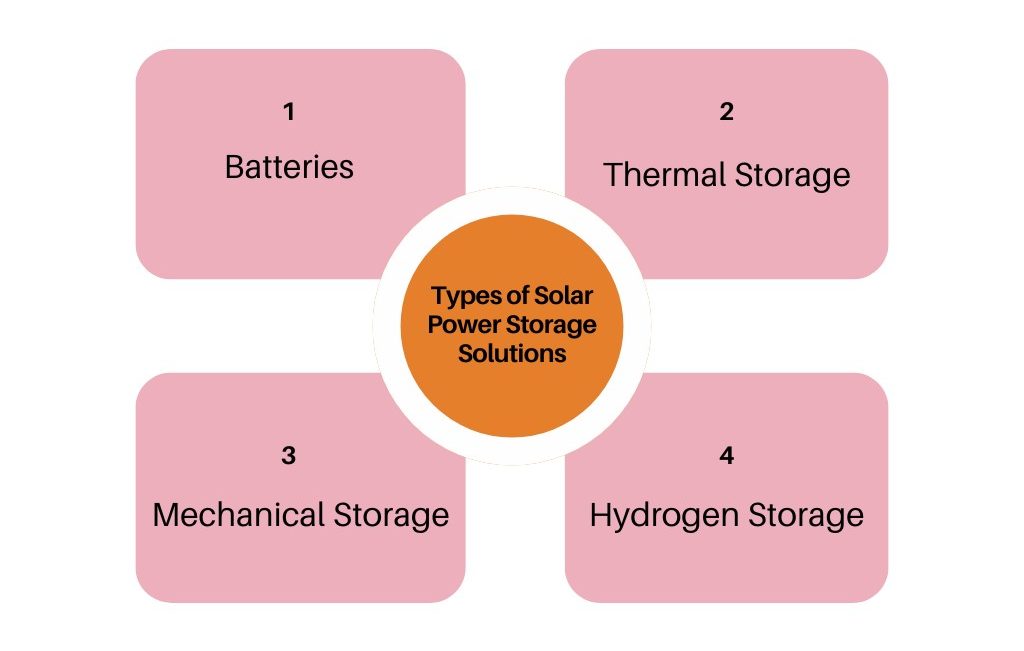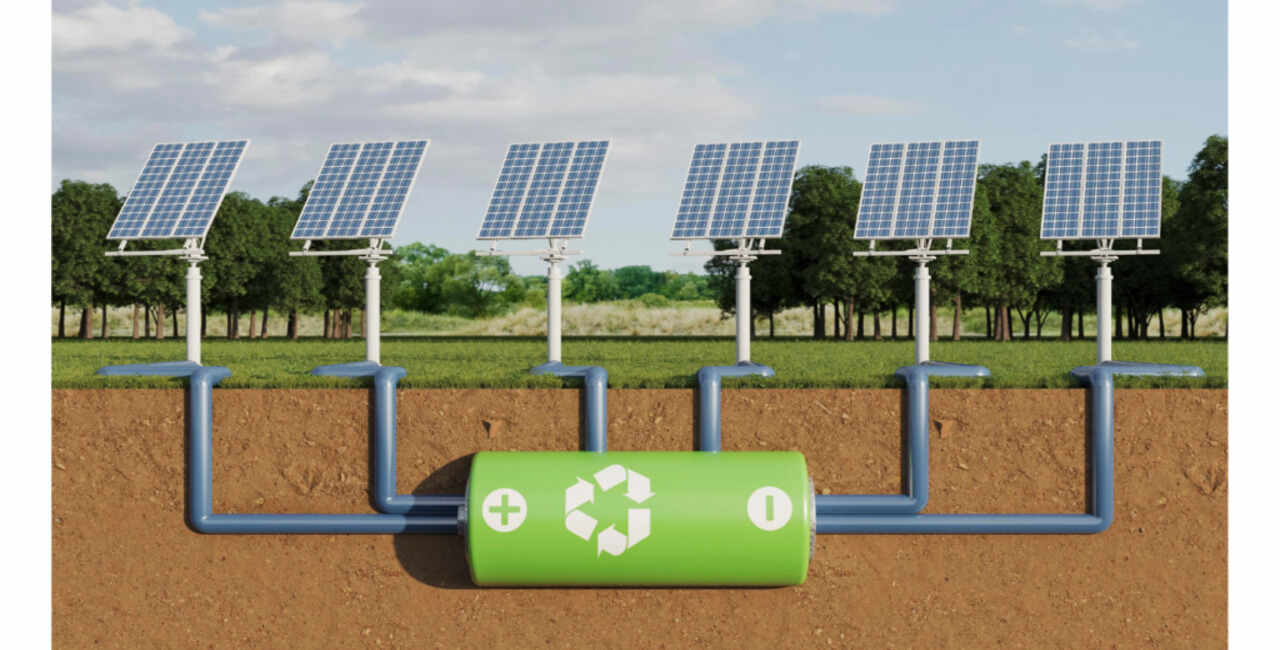
Let’s talk about something we don’t hear nearly enough about when it comes to solar energy: storage. We know solar panels can generate clean electricity from sunlight — that’s the part everyone’s excited about.
But what happens when the sun sets? Or when it's pouring rain for three days straight? That’s where solar energy storage steps in, and it’s absolutely essential for taking solar power to the next level.
In this article, we’ll dive into what solar storage really means, why it’s so important, and how the industry is tackling its biggest challenges. We’ll explore different storage options, how they work with solar systems, and even take a peek into the future of energy storage.
Whether you’re a homeowner thinking about installing solar, a business owner exploring renewable energy, or just someone curious about the clean energy revolution, you’re in the right place.
Solar energy storage means capturing the excess electricity your solar panels generate during the day and saving it for later — like at night, during blackouts, or on cloudy days. It turns your solar setup into a much more reliable and self-sufficient system.
Think of it like charging your phone’s battery. You plug it in when you have access to power, and then you use it when you’re on the move. Solar storage works similarly, except it’s helping power your entire home or business instead of just a smartphone.
Without storage, solar power is kind of like having a kitchen with no fridge. Sure, you can cook up something great, but if you can’t store the leftovers, you’re wasting a lot of good stuff.
Now, let’s get real — solar energy storage is a game-changer, but it’s not without its bumps in the road. There are still a few big hurdles standing between us and the widespread adoption of efficient, affordable storage systems.
Let’s walk through some of the main challenges and what’s being done to solve them.
One of the first things people notice when looking into solar storage is the price tag. Batteries, especially high-capacity ones like lithium-ion, aren’t cheap. A fully installed home storage system can cost several thousand dollars.
The good news? Prices have been falling steadily, thanks to better technology and increased demand. Government incentives, like tax credits and rebates, can also help offset the cost — but not everyone has access to those yet.
As production scales up and materials become more accessible, we’re expecting even more price drops in the near future.
Batteries don’t last forever. Over time, they lose capacity and become less efficient, meaning they hold less charge and deliver less power. It’s just the nature of the technology — especially with lithium-ion and lead-acid batteries.
However, newer chemistries like solid-state and flow batteries are showing longer lifespans and better performance. Manufacturers are also focusing on building smarter systems that monitor usage and help extend battery life.
Energy storage systems aren’t always small. Larger systems take up physical space, which can be a challenge, especially for urban homes or businesses with limited space. And because we’re talking about powerful electrical equipment, safety is a big consideration.
Modern batteries are designed with multiple layers of protection, and many come with fire suppression systems built in. As the industry matures, so do the safety standards — but it’s always something to be aware of when planning a system.
Here’s a fun fact (or maybe not-so-fun): your ability to install and benefit from a solar storage system depends a lot on where you live. In some areas, local regulations, grid rules, and utility policies aren’t fully aligned with the needs of modern solar users.
For example, some utilities offer net metering (paying you for excess solar power you send back to the grid), while others don’t. And incentives for energy storage are inconsistent — some places offer great support, while others have none at all. We’re slowly seeing improvements here, but policy still has some catching up to do.
The more solar and storage systems we plug into the grid, the more complex the energy landscape becomes. Utilities are learning how to manage these decentralized systems, but it’s not easy. They have to ensure the grid stays balanced, voltage levels remain stable, and that stored energy can be fed back into the grid when needed.

So, what exactly does solar energy storage look like? There are several different types of systems, each with its pros, cons, and ideal use cases. Let’s break it down.
You’ve probably heard of lithium-ion batteries — they’re the same type found in laptops, smartphones, and electric vehicles. For home and small business solar setups, they’re the most popular choice.
Why? They’re compact, efficient, and getting more affordable every year. Products like the Tesla Powerwall, LG Chem, and Sonnen Eco have brought lithium-ion into the mainstream for solar users.
Pros:
Cons:
These are your classic battery types — they've been used in off-grid systems for decades. They're cheaper upfront but bulkier and less efficient.
Pros:
Cons:
Flow batteries store energy in a liquid electrolyte. They're not super common yet, but they’re gaining attention for larger applications that need long-duration storage.
Pros:
Cons:
Some systems, especially those tied to concentrated solar power (CSP), store heat instead of electricity like thermal energy. That heat can be used later to generate power or provide heating.
Great for: Large industrial or utility-scale applications — not really for homes.
This one’s still on the cutting edge. Solar energy can be used to split water into hydrogen and oxygen via electrolysis. That hydrogen can be stored and later converted back into electricity using fuel cells.
Pros:
Cons:
Installing a battery is more than just plugging it in and walking away. Smart integration is key to getting the most out of your system.
You don’t want a battery that’s too big (wasted money) or too small (not enough backup). Calculating your daily energy usage, peak loads, and generation patterns helps size the system right.
These are the brains behind the operation. A good EMS monitors solar production, energy usage, and even weather forecasts to decide when to store or release energy. Think of it as your personal energy traffic controller.
Hybrid inverters make integration smoother by handling both solar panel output and battery charging/discharging. If you’re going solar-plus-storage from the get-go, a hybrid inverter is a smart investment.
Batteries can act like mini power plants during outages — perfect for powering essentials like refrigerators, lights, and the internet. And when paired with smart software, they can also participate in demand-response programs or store energy when it’s cheap and use it when prices spike.

We’re on the brink of some seriously cool breakthroughs in solar energy storage. Here’s a taste of what’s coming:
These promise to be safer, longer-lasting, and even more energy-dense than lithium-ion. Once the tech is scalable, it could revolutionize both solar storage and electric vehicles.
As EVs age, their batteries can be reused for stationary storage. It’s a win-win: reducing waste and cutting costs for solar users.
Advanced software will soon make split-second decisions about energy storage, distribution, and consumption — automatically optimizing your system for performance and cost savings.
Imagine a neighborhood where all homes share a common battery system, reducing costs and improving energy resilience- that’s community solar and it’s already being tested in pilot programs and looks very promising.
Researchers are exploring new battery chemistries that are cheaper, more sustainable, and less toxic. Sodium-ion, zinc-air, and organic-based batteries could soon become mainstream.
.png)
Let’s wrap this up: solar panels are amazing, but without solar energy storage, they’re only doing half the job. Storage turns sunlight into a round-the-clock energy source. It makes homes more independent, businesses more resilient, and the entire grid smarter and cleaner.
Sure, there are challenges — from cost and complexity to regulatory speed bumps — but the progress we’ve seen in just the last few years is proof that we’re heading in the right direction.
And here’s a pro tip: if you’re considering going solar, it’s a smart move to think about storage right from the start. The good news? You don’t have to guess or figure it out alone.
With today’s solar design software, you can plan and visualize your entire system — panels, inverters, battery storage, all of it — before installation even begins.
That way, you can make sure everything works together seamlessly and get a clear picture of your energy independence goals.













